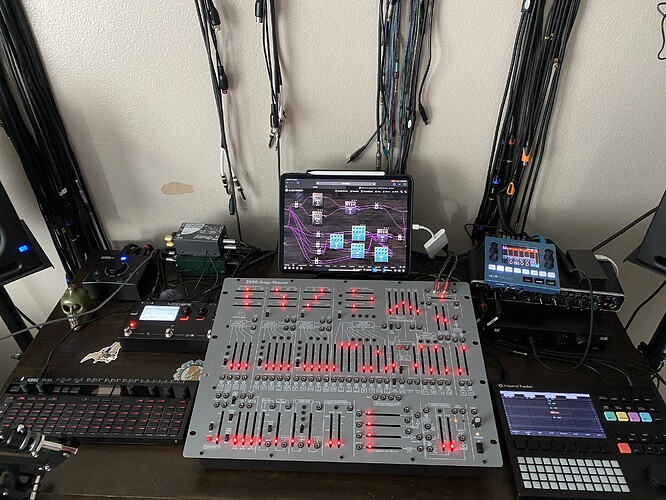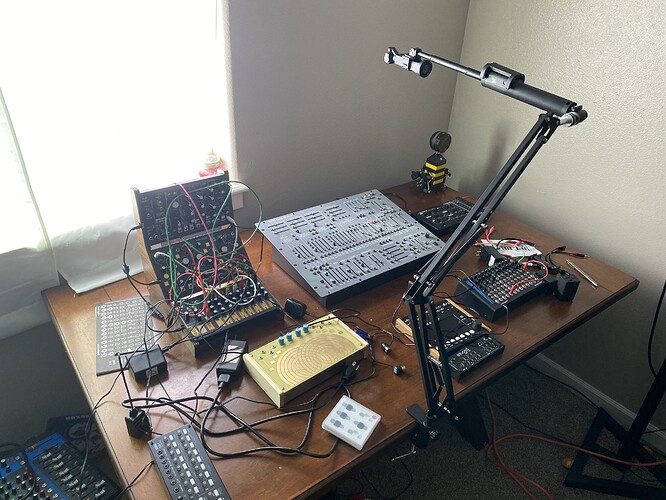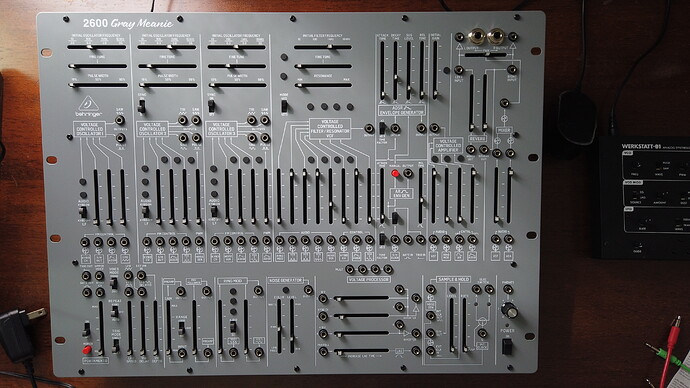Well, next to final update on this issue.
It’s not the dwarf causing the hiss, but @ianr I did actually swap the power supply out with one that you recommended, after I worked extremely hard on my gain staging within my mixer. Messing with the mixer did allow me to isolate that warbling sound you had mentioned, and the new power supply did solve that added noise issue.
I adopted the “perceived loudness” approach to mixing rather than running hot lines.
On my mixer I’m running -15 to -20 dB input gain on my synths with +2 to +6 dB volume, and Master output is at -12 dB gain.
The dwarf I’m still dialing in, but I’m super close. I’m using internal gain plug-ins at the end of my chains, both are negative dB but settings vary. Hardware settings I am still dialing in, input gain is high I think 80-90% gain, and output is sub 50% gain.
So far this configuration has solved a lot of my problems.
I had a big write up about this issue where I was about to call it good and move on. However, as I was getting all buttmad and about to shut everything down; I pulled a passive DI box out from the dwarf input, left the stagebug on the output of the dwarf with ground lift on the L/R channels, and experimented one more time to great success.
I’m so close to victory I can taste it. Guess I’ll tinker some more tomorrow and Sunday, and see if I can get perfect silence.
I’m now down to a few more settings tweaks and gain staging tuning and I may have everything recording the way I want.
Once I feel satisfied, I’m going to re-record a project I shared not too long ago so I can provide a comparison between the two.
So far the dynamic range on my recordings has skyrocketed, no longer need to normalize my tracks, everything is mixed down before it ever hits my audio interface.
I am also no longer struggling with volume issues using this approach, and now I can make slight bumps to my track volume to control my mix.
The hiss is only barely noticeable if I crank my gain settings and volume to max on my headphone amp.
If I am successful this weekend, I’ll do a full write up of the things I addressed with regards to the dwarf and mixer.
I did a bunch of other stuff in my studio that did help a lot with noise, but that needed to be done anyway and is not relevant to the noise issue for the dwarf itself.

 )
)

 if you want a spoiler of this you can just unplug the usb from your dwarf now.
if you want a spoiler of this you can just unplug the usb from your dwarf now.

